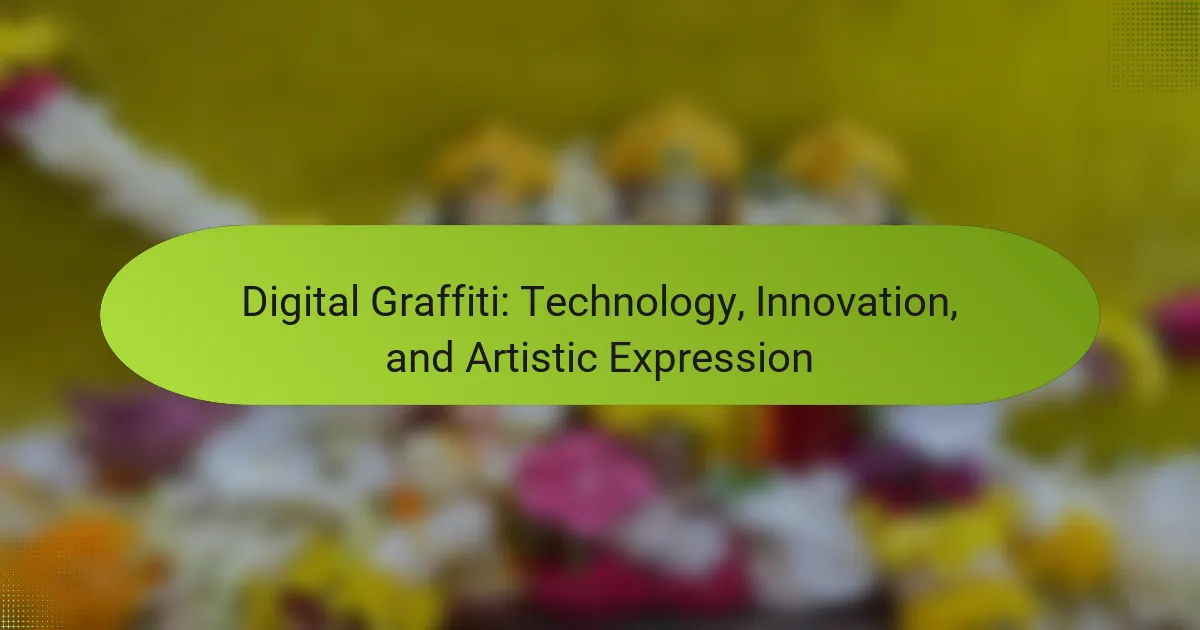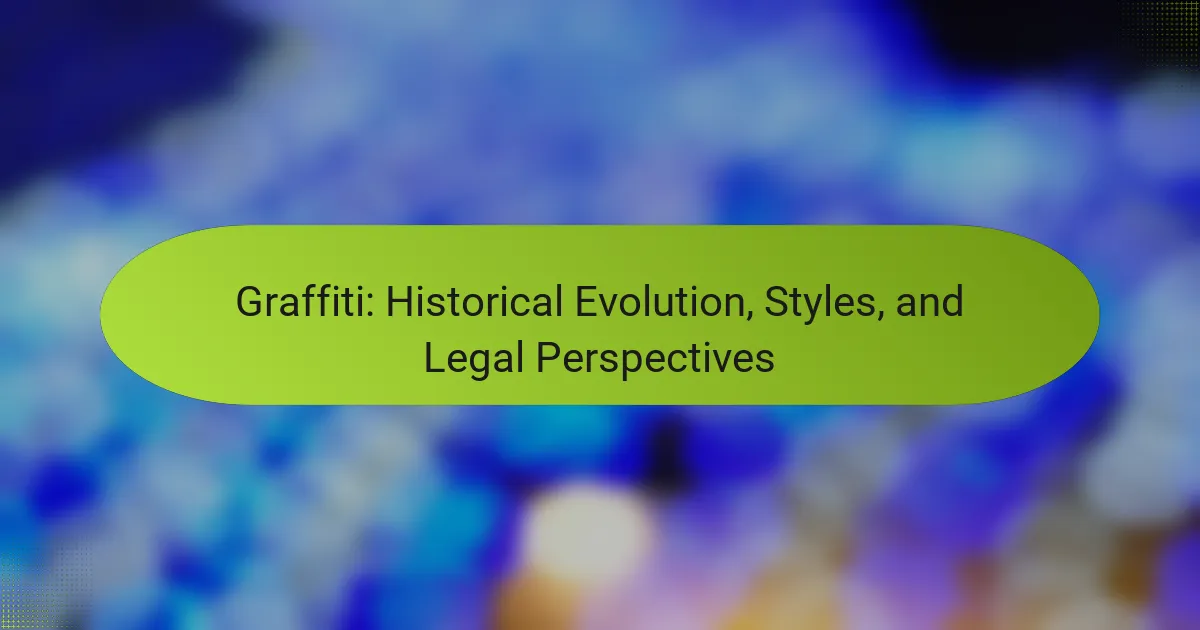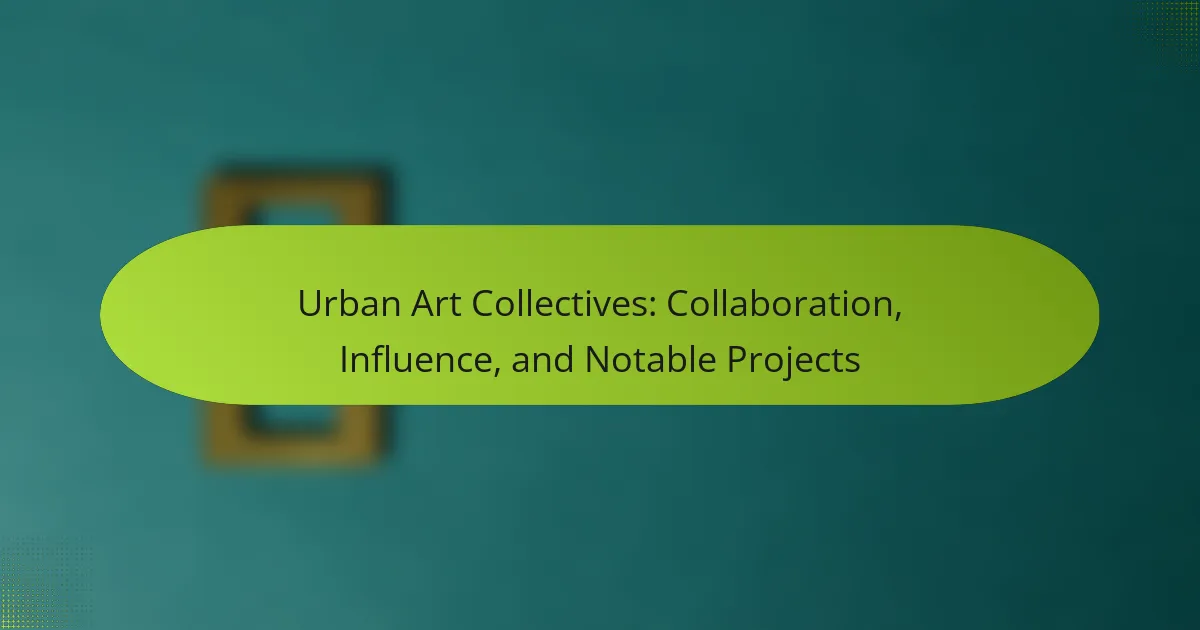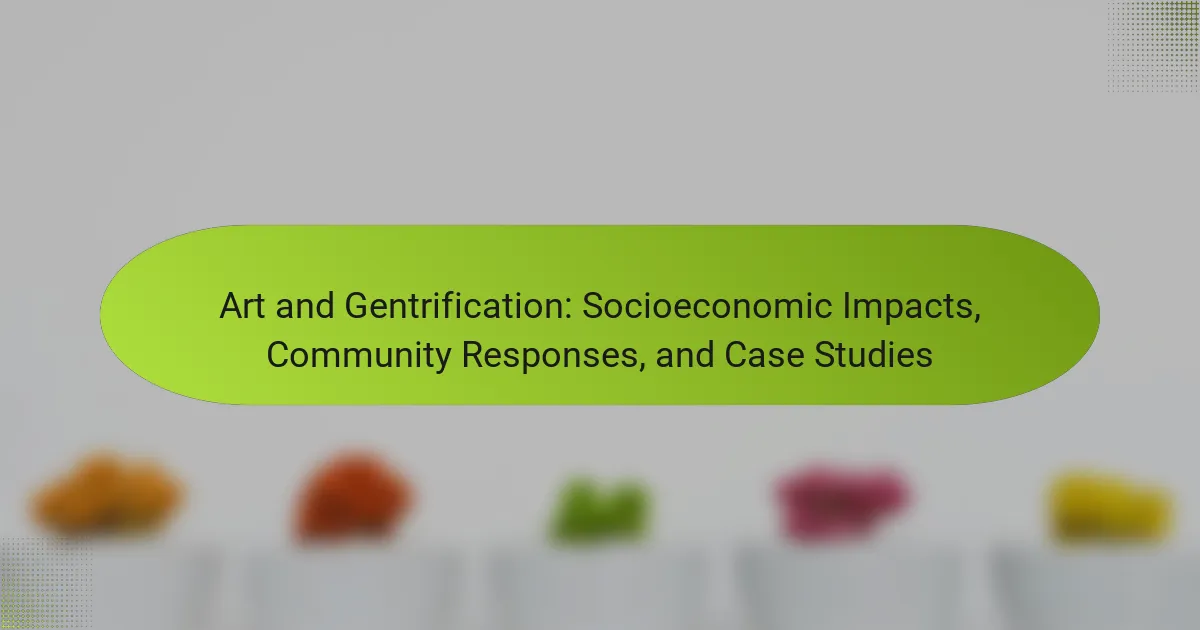Public sculptures play a vital role in enhancing community identity and urban landscapes. Key design approaches include site-specific design, community engagement, and sustainable materials. Common materials like bronze, stone, and stainless steel each offer unique aesthetic and durability properties. Effective urban integration fosters local ownership and interaction, ensuring sculptures resonate with their surroundings and reflect community values.
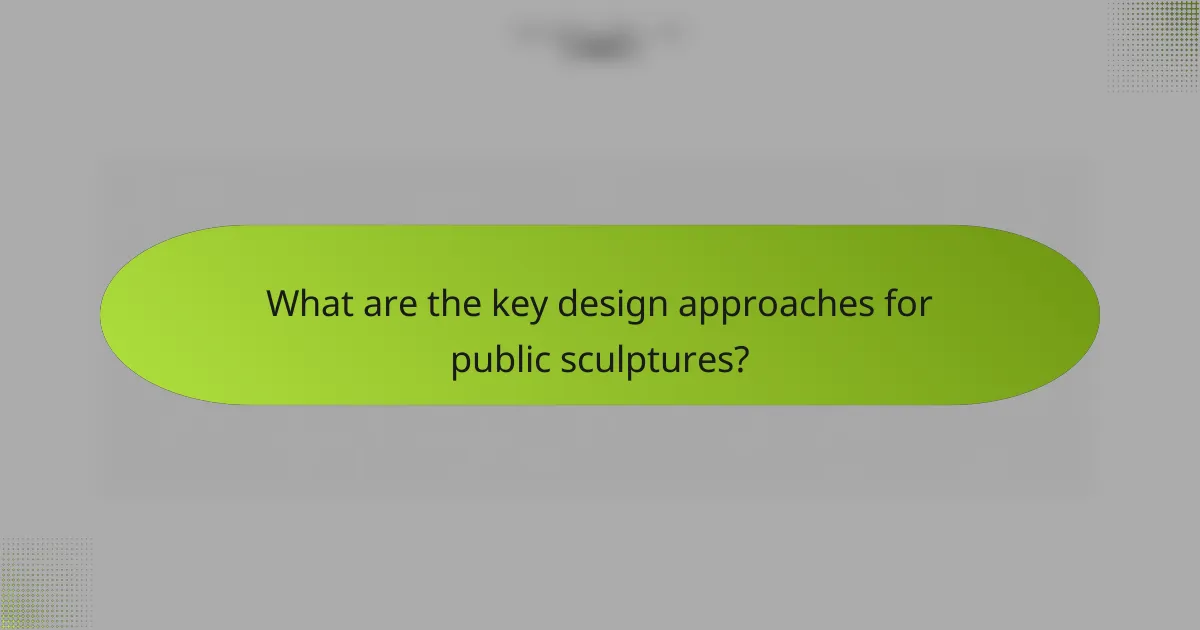
What are the key design approaches for public sculptures?
Key design approaches for public sculptures include site-specific design, community engagement, and sustainable materials. Site-specific design ensures sculptures complement their environment, enhancing urban aesthetics. Community engagement fosters local participation, making artworks resonate with the audience. Sustainable materials promote environmental responsibility, often utilizing recycled or locally sourced elements. Integrating these approaches enhances the impact and relevance of public sculptures.
How do cultural contexts influence sculpture design?
Cultural contexts significantly shape sculpture design by influencing themes, materials, and public perception. Local traditions and societal values inform the aesthetic choices artists make. For instance, sculptures in urban settings often reflect community identity and historical narratives. Materials chosen for public sculptures can vary based on cultural significance; for example, bronze may symbolize durability in some cultures, while wood might evoke a connection to nature. Additionally, the integration of sculptures into urban landscapes is guided by cultural priorities, ensuring that installations resonate with local inhabitants.
What role does community engagement play in the design process?
Community engagement is crucial in the design process of public sculptures, as it fosters collaboration and inclusivity. Engaging local communities ensures that sculptures reflect cultural values and meet public needs. This process can enhance the aesthetic appeal and relevance of the artwork. Additionally, community input can lead to unique design features that resonate with the audience. Ultimately, active participation contributes to a sense of ownership and pride in the public space.
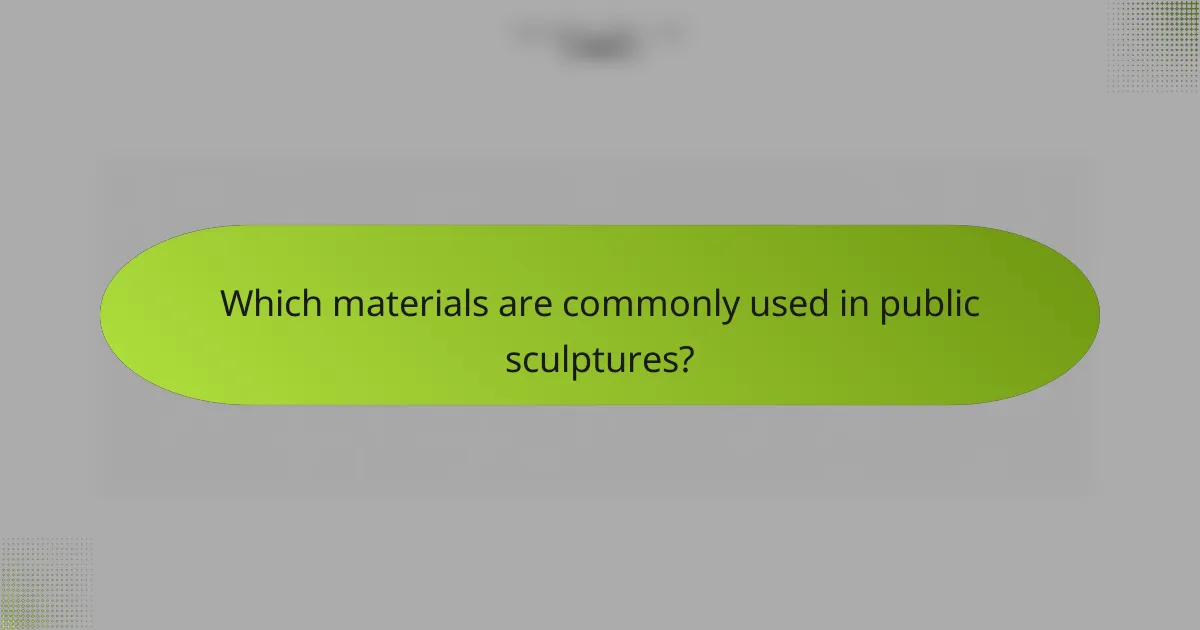
Which materials are commonly used in public sculptures?
Common materials used in public sculptures include bronze, stone, stainless steel, wood, glass, and concrete. Each material offers unique aesthetic and durability properties. Bronze is favored for its longevity and detail, while stone provides a classic look. Stainless steel is popular for modern designs, and wood offers warmth and natural appeal. Glass can create striking visual effects, and concrete is versatile for large installations.
What are the benefits and limitations of different materials?
Different materials for public sculptures offer distinct benefits and limitations. Metals like bronze provide durability but may require maintenance. Stone offers permanence but can be costly and heavy. Wood is eco-friendly and versatile but susceptible to weathering. Glass allows for innovative designs but can be fragile. Each material’s choice impacts design, cost, and longevity.
How do environmental conditions affect material choice?
Environmental conditions significantly influence material choice for public sculptures. Factors such as climate, pollution, and exposure to natural elements dictate the durability and maintenance of materials. For instance, metals may corrode in coastal areas, while certain woods can warp in humid climates. Additionally, temperature fluctuations impact the integrity of materials like glass and concrete. Designers must consider these aspects to ensure longevity and aesthetic appeal in urban settings.
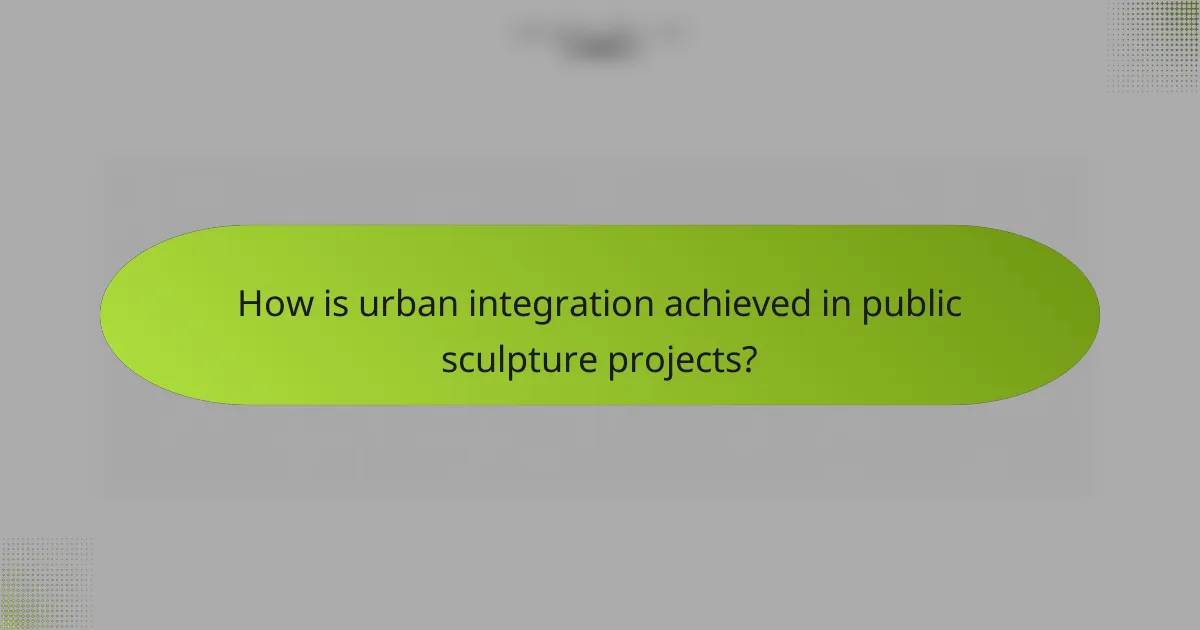
How is urban integration achieved in public sculpture projects?
Urban integration in public sculpture projects is achieved through community involvement, contextual design, and sustainable materials. Engaging local communities fosters a sense of ownership and relevance. Contextual design ensures sculptures resonate with their surroundings, enhancing the urban landscape. Sustainable materials contribute to environmental goals, creating lasting installations that reflect community values. This multifaceted approach promotes harmony between art and urban spaces.
What strategies enhance visibility and accessibility in urban spaces?
Public sculptures enhance visibility and accessibility in urban spaces through strategic design and integration. Effective placement in high-traffic areas increases public engagement. Incorporating diverse materials ensures durability and aesthetic appeal. Interactive features invite participation, fostering community connections. Additionally, sculptures can serve as landmarks, guiding navigation and improving wayfinding.
Which urban design principles support effective sculpture placement?
Effective sculpture placement relies on principles such as visibility, accessibility, and context. These factors ensure sculptures enhance public spaces and engage viewers.
Visibility is crucial; sculptures should be placed where they can be easily seen from various angles. Accessibility ensures that people can approach and interact with the artwork. Context involves integrating sculptures with surrounding architecture and landscape to create a cohesive aesthetic experience.
Additionally, considering the scale and material of the sculpture can influence its impact within the urban environment. For example, larger sculptures may serve as focal points, while smaller pieces can enhance intimate spaces.
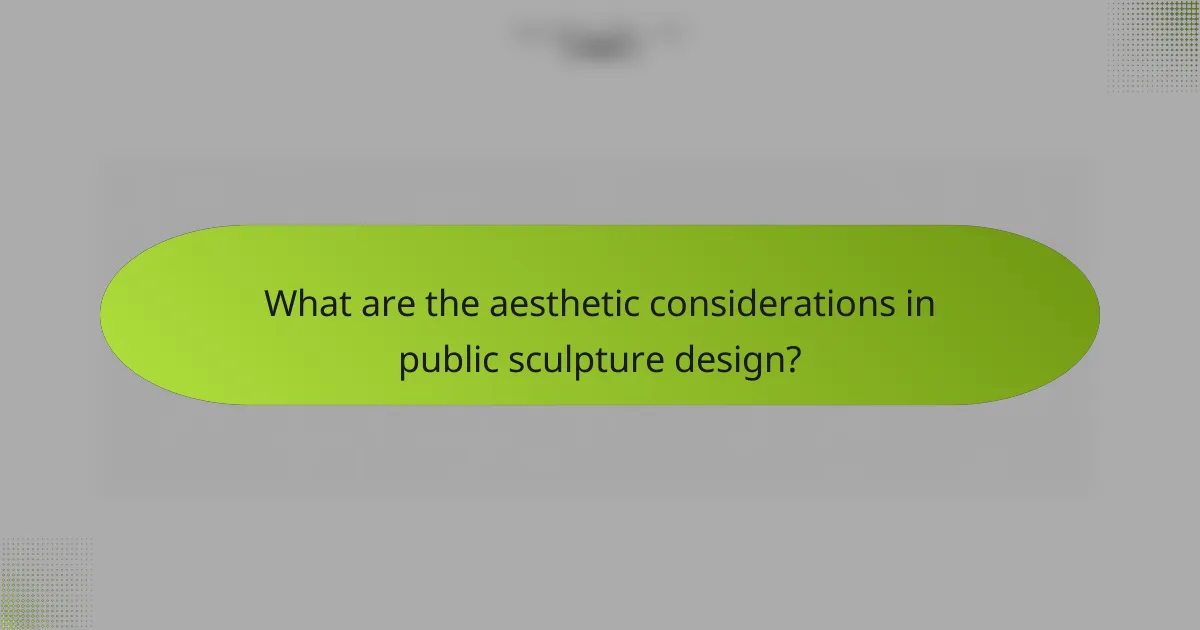
What are the aesthetic considerations in public sculpture design?
Aesthetic considerations in public sculpture design include harmony with the environment, material selection, and cultural relevance. These elements enhance visual appeal and ensure the sculpture resonates with the community.
The integration of color, form, and texture plays a crucial role in attracting attention and encouraging interaction. For instance, sculptures with organic shapes often evoke a sense of movement, while geometric forms can convey stability.
Cultural symbols and local history can enrich the narrative of a sculpture, making it more meaningful to viewers. Additionally, the scale of the sculpture should be proportionate to its surroundings, ensuring it complements the urban landscape rather than overwhelming it.
Finally, maintenance of the materials used is vital for preserving the aesthetic quality over time. Durable materials can withstand environmental factors, maintaining their visual integrity and contributing to the sculpture’s longevity in public spaces.
How do form and function interact in public artworks?
Public artworks, particularly sculptures, blend form and function to enhance urban spaces. The design approach influences how these artworks interact with their surroundings. Aesthetic appeal often attracts viewers, while functional aspects, such as seating or pathways, encourage engagement.
Materials play a crucial role in this interaction. For instance, durable materials withstand environmental conditions, ensuring longevity and maintaining visual impact. Urban integration is vital; sculptures should complement architectural styles and local culture, fostering community identity.
Public sculptures also serve as landmarks, guiding movement and interaction within the urban landscape. Their placement can create focal points that enhance navigation and social interaction among residents and visitors.
In summary, the interplay between form and function in public sculptures creates a cohesive urban experience, enriching the environment while serving practical purposes.
What visual themes resonate with diverse audiences?
Public sculptures resonate with diverse audiences through inclusive design, cultural relevance, and emotional connection. These themes foster engagement and reflection among viewers. For example, sculptures that incorporate local history or community stories create a sense of belonging. Additionally, interactive elements invite participation, enhancing viewer experience. Materials like bronze, stone, or recycled materials can also influence audience perception, with sustainable options appealing to environmentally conscious individuals.
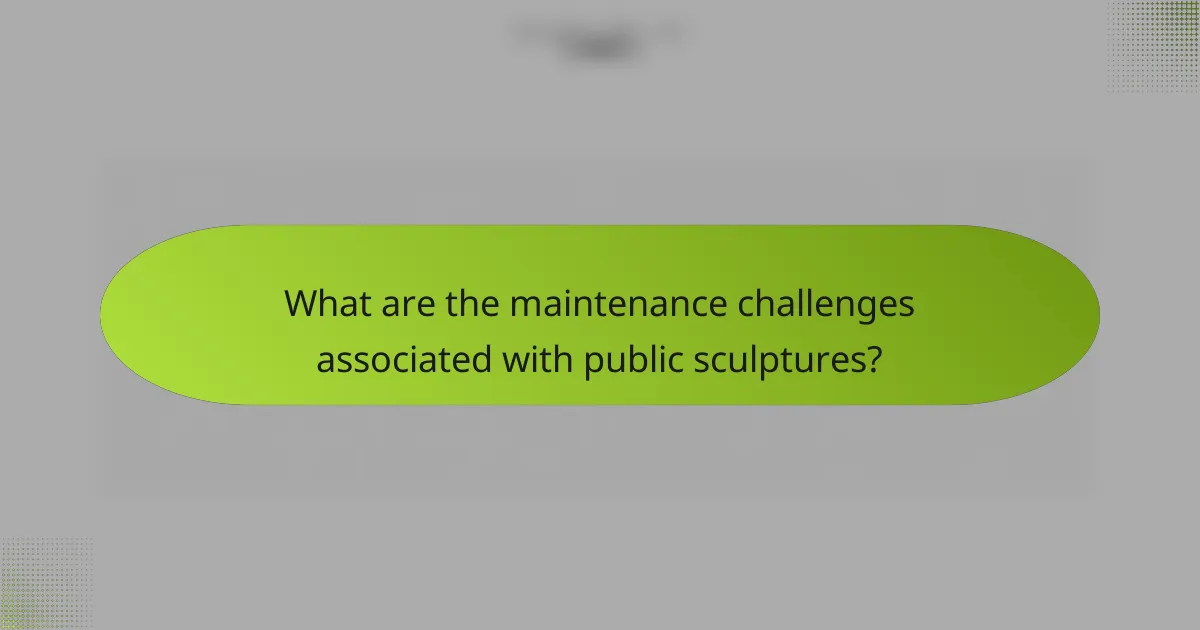
What are the maintenance challenges associated with public sculptures?
Public sculptures face several maintenance challenges, including environmental damage, vandalism, and material degradation. Regular cleaning is essential to prevent dirt accumulation and corrosion, especially for metal sculptures. Weather exposure can lead to wear, requiring protective coatings or restoration efforts. Vandalism poses a unique threat, necessitating repairs or replacements of damaged elements. Additionally, urban integration issues, such as accessibility and safety, can complicate maintenance strategies.
How can durability be ensured in public art installations?
Durability in public art installations can be ensured through careful material selection, protective coatings, and strategic design features. High-quality materials like stainless steel and weather-resistant concrete enhance longevity. Protective coatings can shield sculptures from environmental damage. Additionally, incorporating features that minimize vandalism and damage, such as elevated placements or rounded edges, contributes to durability. Regular maintenance and inspections are also crucial to address wear and tear effectively.
What are common restoration practices for aging sculptures?
Common restoration practices for aging sculptures include cleaning, repairing, and protecting the surfaces. Cleaning often involves gentle methods to remove dirt and pollutants without damaging the material. Repairing may include filling cracks or replacing missing elements, using compatible materials to ensure structural integrity. Protecting sculptures typically involves applying coatings that shield against environmental factors. Regular maintenance is essential to preserve the aesthetic and historical value of public sculptures.
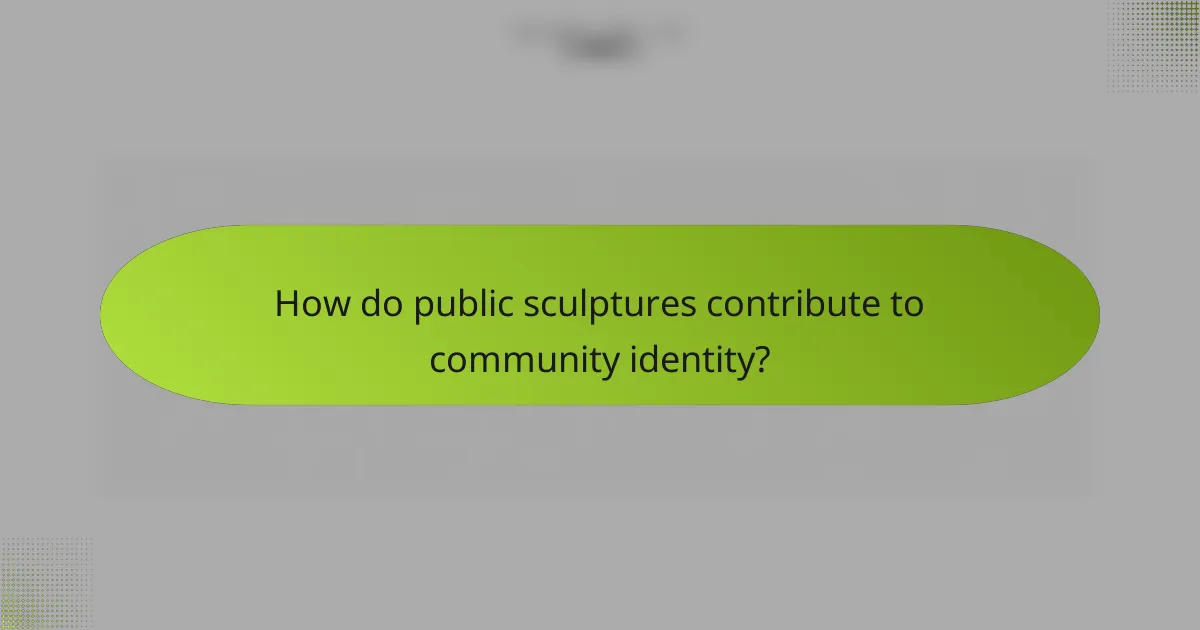
How do public sculptures contribute to community identity?
Public sculptures significantly enhance community identity by fostering a sense of belonging and cultural expression. They serve as landmarks that reflect local history, values, and creativity. Engaging design approaches, such as interactive elements or site-specific installations, deepen community involvement. Materials like bronze, stone, or recycled composites contribute to durability and aesthetic relevance. Urban integration of sculptures, through strategic placement in public spaces, encourages social interaction and civic pride, ultimately strengthening community ties.
What impact do sculptures have on local tourism and economy?
Public sculptures significantly enhance local tourism and boost the economy. They attract visitors, promote cultural engagement, and create a sense of place. Sculptures often serve as landmarks, encouraging exploration and longer stays in the area.
Additionally, public art initiatives can lead to increased foot traffic for local businesses. A study found that cities with vibrant public art scenes see a 20% rise in tourism-related revenues. Furthermore, sculptures can improve urban aesthetics, making areas more appealing to potential residents and investors.
Investing in public sculptures fosters community pride and identity. Unique pieces often become symbols of the locality, drawing attention and generating social media interest. This can lead to events and festivals centered around the artwork, further stimulating economic activity.
Overall, the presence of public sculptures can transform urban spaces, making them more attractive to tourists and beneficial for the local economy.
How can sculptures reflect historical narratives and cultural heritage?
Public sculptures effectively reflect historical narratives and cultural heritage through their design, materials, and urban integration. They serve as visual storytelling tools, embodying the values and experiences of communities. Sculptures often utilize local materials, connecting them to specific places and histories. For example, a bronze statue may commemorate a significant local figure, while a stone sculpture might represent indigenous traditions. Urban integration allows sculptures to engage with public spaces, inviting interaction and reflection. This accessibility deepens their impact, making history tangible and fostering a sense of belonging among residents.
![]()
What are the unique attributes of iconic public sculptures worldwide?
Iconic public sculptures worldwide possess unique attributes that enhance their significance. These attributes include historical context, cultural symbolism, innovative design, and site-specific integration.
Historical context often ties sculptures to pivotal events or figures, enriching their narrative. Cultural symbolism reflects the values and beliefs of the communities they represent, making them relatable to local populations. Innovative design showcases artistic techniques and materials, pushing creative boundaries. Site-specific integration emphasizes how sculptures interact with their surroundings, creating a dialogue with urban landscapes.
These factors contribute to the iconic status of public sculptures, making them essential elements of cultural heritage and urban identity.
Which sculptures have sparked significant public discourse?
Several public sculptures have sparked significant public discourse, notably due to their provocative themes or social relevance. Examples include “The Fearless Girl,” which promotes gender equality, and “The Charging Bull,” symbolizing financial optimism. These works often ignite discussions about societal values, ethics, and urban identity. Public reaction can vary widely, reflecting diverse perspectives on art’s role in public spaces.
How do landmark sculptures influence urban landscapes?
Landmark sculptures significantly enhance urban landscapes by serving as focal points and cultural symbols. They contribute to community identity and attract tourism, fostering economic growth.
These sculptures often utilize durable materials like bronze and stone, ensuring longevity and resilience against environmental elements. Their design approaches range from abstract forms to representational art, reflecting the city’s character and values.
Public sculptures can integrate seamlessly into urban spaces, promoting interaction and engagement. They create gathering spots, encouraging social cohesion and enhancing the aesthetic appeal of the environment.
As a result, landmark sculptures not only beautify urban areas but also enrich the cultural fabric, making cities more vibrant and livable.
What are the rare but impactful forms of public sculpture?
Rare forms of public sculpture include interactive installations, kinetic sculptures, and site-specific art. These unique approaches engage audiences and enhance urban environments. Interactive installations invite participation, while kinetic sculptures incorporate movement, creating dynamic experiences. Site-specific art responds to its surroundings, fostering a deeper connection with the location.
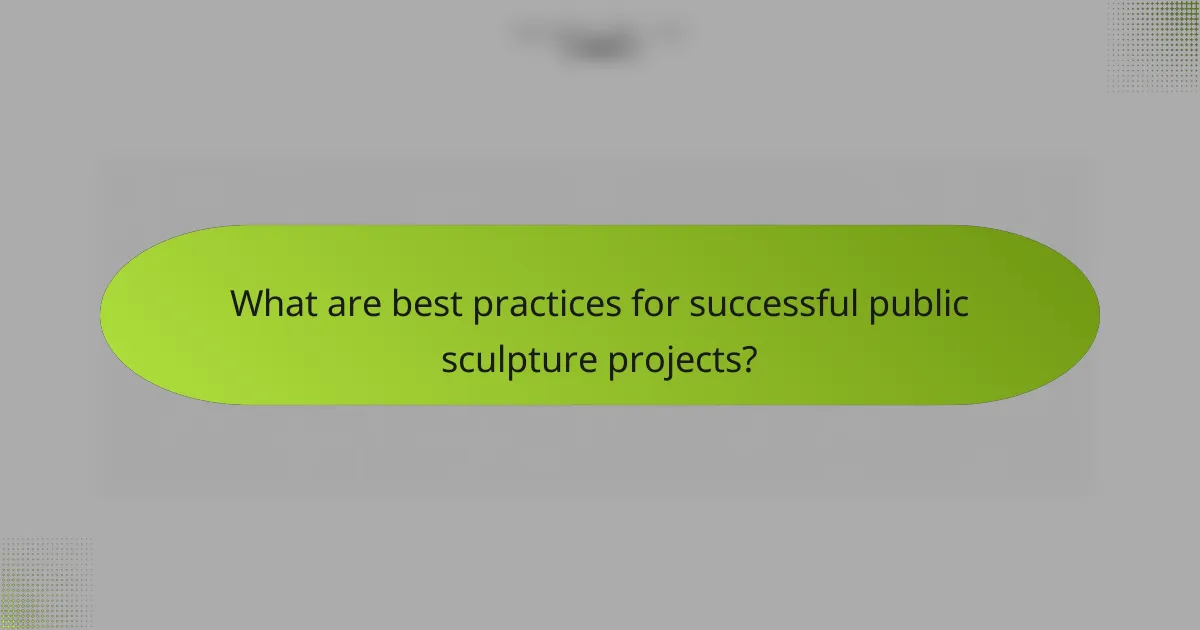
What are best practices for successful public sculpture projects?
Successful public sculpture projects require community engagement, thoughtful design, and material selection. Engaging local stakeholders fosters ownership and relevance. Design should reflect the site’s cultural context and aesthetic values. Choosing durable materials ensures longevity and reduces maintenance costs. Integration into urban spaces enhances accessibility and interaction, creating a dynamic environment.
What steps should be taken to ensure community involvement?
To ensure community involvement in public sculptures, engage the community through participatory design processes.
1. Host workshops to gather input on design concepts.
2. Collaborate with local artists and stakeholders.
3. Provide opportunities for public feedback on proposals.
4. Organize events to celebrate the installation and educate the community about the artwork.
5. Maintain ongoing communication to foster a sense of ownership and pride.
How can artists and designers collaborate effectively on projects?
Artists and designers can collaborate effectively by establishing clear communication, defining roles, and integrating their distinct perspectives. Collaborative brainstorming sessions encourage creative synergy. Utilizing shared digital platforms enhances project management and documentation. Regular feedback loops ensure alignment and foster innovation.
What common mistakes should be avoided in public art initiatives?
To avoid common mistakes in public art initiatives, focus on community engagement, clear objectives, and site suitability. Ignoring local input can lead to a disconnect between the art and its audience. Establishing vague goals may result in misaligned expectations. Selecting inappropriate materials or designs can hinder urban integration. Additionally, neglecting maintenance planning can diminish the artwork’s longevity and impact.
